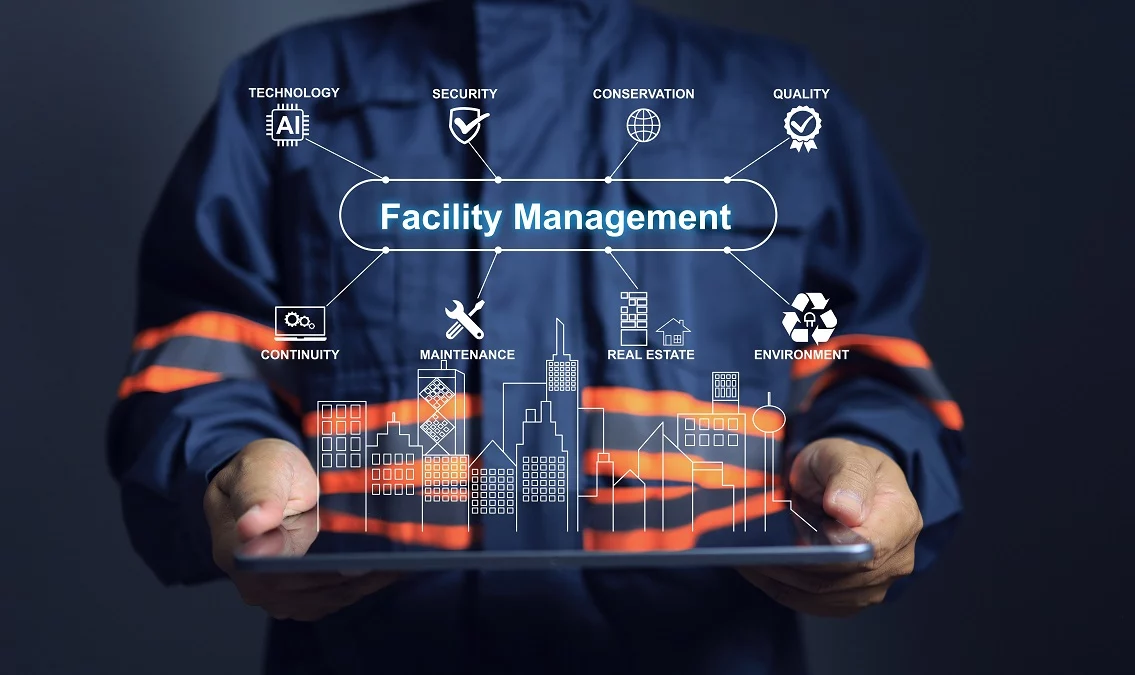Finest Practices in Facility Management for Modern Organizations
Finest Practices in Facility Management for Modern Organizations
Blog Article
Key Fads Forming the Future of Center Monitoring in 2024
As we look ahead to 2024, the landscape of center administration is poised for significant makeover, driven by several crucial patterns. The integration of smart structure innovations and a shift towards data-driven decision-making pledge to enhance functional effectiveness while prioritizing sustainability in method.
Smart Structure Technologies

Smart building innovations include a broad range of systems, including intelligent lighting, heating and cooling controls, and safety systems. By incorporating these systems, facility managers can monitor and readjust parameters in real-time, bring about considerable reductions in energy waste and operational prices. For example, clever sensing units can identify occupancy levels and change illumination and temperature accordingly, making sure that power is just utilized when necessary.
Furthermore, these modern technologies assist in boosted information collection, permitting companies to track usage patterns and identify chances for more enhancements. The application of smart structure modern technologies not only adds to sustainability objectives however likewise produces much healthier work environments that can boost worker productivity and contentment.
As we relocate right into 2024, the adoption of smart building innovations will likely speed up, mirroring a broader shift in the direction of more smart, receptive, and sustainable center administration practices.
Data-Driven Decision Making
Progressively, organizations are leveraging data-driven decision making to boost facility management techniques. By taking advantage of data analytics, facility managers can derive workable insights that significantly improve operational performance and resource allotment. The assimilation of sophisticated modern technologies, such as IoT sensors and real-time tracking systems, allows the collection of huge amounts of data on building efficiency, tenancy rates, and power consumption.
This wide range of details allows facility managers to recognize trends, anticipate upkeep needs, and proactively address concerns before they rise. Predictive analytics can forecast equipment failings, minimizing downtime and repair work expenses. Furthermore, information visualization tools promote far better interaction among stakeholders, making sure that informed decisions are made collaboratively.
In addition, data-driven strategies enhance tactical planning by enabling center managers to assess the efficiency of current methods and make informed selections concerning financial investments in innovation or framework. As companies increasingly prioritize functional quality, data-driven choice making is positioned to become a cornerstone of successful facility monitoring strategies in 2024 and past. Inevitably, the capacity to utilize information properly will encourage organizations to develop a lot more effective, efficient, and resilient facilities.
Sustainability and Environment-friendly Practices
The focus on data-driven choice making naturally lines up with the expanding emphasis on sustainability and eco-friendly methods within center administration. As companies increasingly focus on environmental responsibility, center supervisors are leveraging analytics to enhance resource use, lower waste, and reduce carbon footprints. This critical strategy allows the integration of energy-efficient systems, such as LED lighting, wise heating and cooling controls, and renewable resource resources right into center operations.
Moreover, the execution of sustainable techniques prolongs beyond power intake. Facility supervisors are embracing eco-friendly materials and advertising reusing campaigns to produce a circular economic climate within their facilities. This not just boosts the ecological profile of the organization but also cultivates a culture of sustainability amongst staff members.
Conformity with environmental guidelines is one more crucial facet driving the fostering of green techniques. By utilizing data analytics, facility managers can keep track of compliance metrics and determine locations for enhancement, making sure adherence to local and international sustainability requirements.
Crossbreed Job Versions
A considerable change in the direction of hybrid work designs is improving the landscape of center management in 2024. This standard combines remote and in-office job, requiring a reevaluation of room utilization, resource allocation, and employee engagement methods. Organizations are significantly identifying the value of flexible offices that deal with varied needs and choices.
Center supervisors should adjust by implementing functional office layouts that sustain collective initiatives while supplying locations for concentrated job. This includes the integration of modern technology to facilitate smooth interaction and collaboration among remote and in-office staff members. Smart structure services, equipped with sensors and analytics, permit real-time surveillance of area usage, making it possible for companies to maximize their atmospheres efficiently.
Moreover, crossbreed job designs emphasize the demand for efficient center monitoring that focuses on staff member experience. In significance, the crossbreed job model is reinventing facility monitoring, motivating a positive strategy to satisfy the progressing needs of the workforce.
Enhanced Occupant Wellness
As organizations welcome hybrid work versions, an enhanced concentrate on owner wellness is becoming essential to facility management strategies. Facility Management. This shift recognizes that a satisfied and healthy workforce straight impacts visit site performance and retention prices. Facility managers are now prioritizing settings that advertise mental and physical health, integrating aspects such as all-natural illumination, biophilic design, and easily accessible wellness sources

Modern technology plays an important function in this development. Smart building systems can keep track of environmental variables and change setups in real-time, making certain optimum convenience levels - Facility Management. Feedback mechanisms, such as tenancy sensing units and staff member studies, allow center supervisors to consistently fine-tune wellness initiatives based on passenger needs.

Conclusion
In 2024, the future of center monitoring will certainly be significantly influenced by the combination of clever structure technologies and data-driven decision-making, fostering improved operational performance. These trends jointly underscore the evolving landscape of This Site facility management in feedback to modern difficulties and opportunities.
Center supervisors are embracing environment-friendly products and advertising recycling initiatives to develop a round economic situation within their centers.A considerable change in the direction of crossbreed work models is improving the landscape of click resources facility monitoring in 2024.Additionally, crossbreed job designs highlight the need for reliable facility monitoring that focuses on staff member experience.As organizations welcome hybrid job models, an enhanced emphasis on resident health is ending up being important to center monitoring strategies.In 2024, the future of facility management will certainly be substantially affected by the combination of smart building technologies and data-driven decision-making, cultivating boosted operational effectiveness.
Report this page